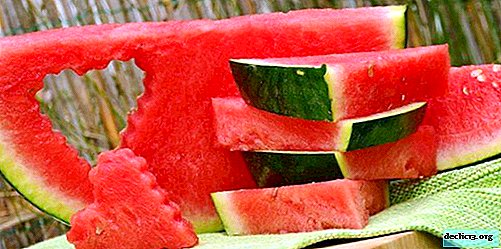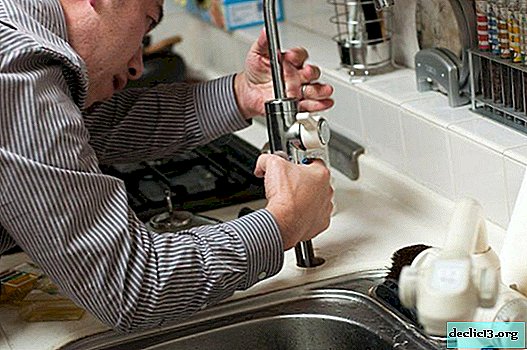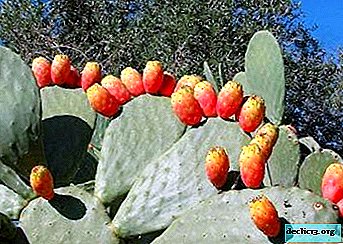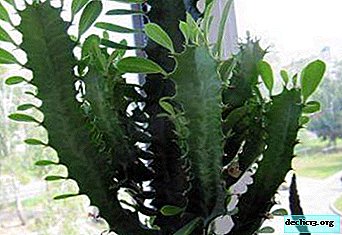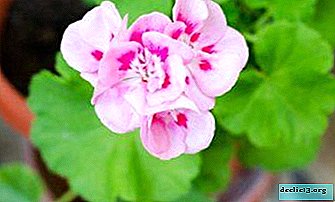It is interesting. Step-by-step instructions on how to grow a rose in potatoes and care for it

Rose is the queen of flowers, one of the most common and multi-species plants in gardens. Despite the rather high whimsicality, not a single gardener will deny himself the pleasure of planting these beautiful, delicate buds in his front garden, from which bloom is breathtaking.
Our article on how to sprout a flower in a potato. Gardeners will find here answers to many questions regarding the optimal conditions and subtleties of the process of cuttings and rooting of this wonderful flower.
How to sprout a flower in a potato?
To get a rose bush, cuttings must be cut, at least 0.5 cm in diameter (too thin stems are unsuitable for growing) and a length of about 15 cm. With a sharp end, each stalk must be stuck in a healthy potato tuber and planted in pots. These simple manipulations will help to keep the stalk intact and give it everything you need for rapid growth.
Advantages and disadvantages
The method of growing roses by cuttings is quite simple, it is much more difficult to propagate roses by seeds or grafting. You can use the green stems of the shoots - cuttings. If you follow all the recommendations, you can get a rose bush even from flowers donated for the holiday.
Cuttings of roses are very whimsical, when planting immediately in the open ground, the possibility of drying the stem is great. It is also impossible to grow a stalk in water, the plant will lack oxygen and it will rot. In such cases, ordinary potatoes come to the rescue, which will provide the stem with the necessary oxygen level and save the stalk from excess moisture.
Reference. The method is not typical for all varieties of roses, some of them cannot be grown using potatoes (for example, weaving roses). This method is effective only for erect stems.Another disadvantage of this method is the threat of not planting flowers in the open field after transplantation. About 15% of the plants may not survive, despite the grown roots.
How to propagate at home, step by step
Inventory preparation
To grow roses from potatoes, you do not need any additional equipment. Enough conventional secateurs, a knife and a small shovel.
The choice of material for propagation
 The choice should be taken seriously so as not to waste your time and labor. You can not cut the unripe bud. It can be easily distinguished from a ripened one - it is more difficult for an unripe bud to tear spikes. It is difficult to grow a rose from cuttings with unripened buds, they often do not take root.
The choice should be taken seriously so as not to waste your time and labor. You can not cut the unripe bud. It can be easily distinguished from a ripened one - it is more difficult for an unripe bud to tear spikes. It is difficult to grow a rose from cuttings with unripened buds, they often do not take root.
When rooting a purchased cut rose, you should make sure that the flower was grown on the territory of Russia, as foreign suppliers often treat the cut with a special solution for longer storage, which makes growing difficult or impossible.
The potato should be young, preferably recently dug up (such a potato contains the maximum amount of useful and nutrients), medium in size, without any signs of decay or disease.
Flower and potato preparation
This is the most important step in growing a healthy rose. For everything to go well, you need to adhere to the rules:
- Cuttings must be cut with a sharp secateurs, leaving the upper cut straight and the lower cut at an angle of 45 degrees to make it easier to stick into the potato. Experienced gardeners are advised to leave a pair of upper leaves on the stem and remove all the lower ones. Important! At least three buds should remain on the handle. The cut is recommended to be performed below the kidney by 2 cm. The upper cut is 1 cm above the kidney.
- Then the cuttings must be treated with potassium permanganate and left for 12 hours in aloe juice (you can add honey) to stimulate growth. It is allowed to use purchased biostimulants - Kornevin or Gilea. After this, rose cuttings must be kept for a day in a heteroauxin solution.
- The next step is to prepare the selected potatoes. To do this, it is enough to cut out all the eyes to prevent germination.
Care and greenhouse effect
- When everything is prepared, stick each stalk into a separate potato with the lower, sharp end to about the middle and place it in a shallow pot, putting drainage on the bottom of the pot and mixing the soil with sand. The first watering must be carried out with an unsaturated solution of potassium permanganate.
- Grown roses require constant watering, and it is also advisable to saturate the tubers with sugar solution once a week (1 tablespoon per cup of water). Regularly spray the plant, as it is best to root it in a humid environment.
- The cutlery must be kept under the can and provide good lighting. The leaves of the stem should not come in contact with the glass jars.
 The first shoots can be expected in a month, and sometimes earlier.
The first shoots can be expected in a month, and sometimes earlier.
Two weeks after planting, it is necessary to clean the can brieflytame the plant to the environment. First, the jar is slightly lifted and fixed. In this position, the flower begins its acquaintance with open air. Every day you need to increase the time to familiarize the roses with the space, and after a week the jar can be removed altogether. It can be removed immediately, but after half a month to put back on time.
We offer you to watch a video lesson on the rooting of roses in potatoes:
Outdoor transplant in autumn or spring
Now, when the handle does not need to protect the cans, it is ready for transplanting into the open ground. If a bud is found on a precocious stem, it must be removed. For a fortnight before the transplant, it is advisable to begin to temper the plant, for this it is enough to take it outside for a couple of hours.
Attention! You can plant it either in the spring, so that by the autumn you get an adult bush, or in the fall, so that the plant has time to grow stronger and take root. The place is preferably open, well protected from the wind.- For planting, a pit with a depth of about 20-30 cm is necessary. It is very important to fill the bottom of the pit with sand so that the potatoes do not touch the ground, this will help prevent tuber and, accordingly, stems from decaying. Then we stick the cuttings into the pit. If you plant roses nearby, then for further growth, the distance between them should be at least 15 cm.
- We fill the hole with earth, leaving the root neck a couple of centimeters from the surface, and ram it a little. It is very important to maintain soil moisture, to produce regular, but moderate watering, so that rot does not begin.
- For some time, it is recommended to keep the plant, which is planted in potatoes, under a container with an opening (an ordinary plastic bottle with a screwed-off lid will do), so that the plant becomes accustomed, but does not lose oxygen. In sunny weather, direct rays should be avoided by obscuring the plant. On cloudy days, the bank needs to be cleaned.
When the plant gets stronger (it can take about a month), it will no longer need shelters.
- In winter, the planted rose is sheltered from the cold, when the night temperature drops to 5 degrees below zero. The roots must be hidden under organic mulch (dry hay, leaves, grass, straw, bark, sawdust), and the stalk itself - with some dense material (polyethylene, oilcloth).
- The first year, pruning seedlings are not carried out.
Result
The first flowering will begin in six months. Watch the plant and, having gained strength, it will delight with its magnificent flowers.
Photo
So, we examined step by step this way to grow a rose, and then in the photo you can see how the cuttings of a flower that are planted in potatoes look like.





Growing difficulties
Growing a rose from a stalk is a process that requires patience and special attention. When germinating, one cannot neglect any rules, otherwise the plant will no longer be saved.
- Keep track of soil moisture and the condition of the cuttings. If the stalk is blackened from cold weather, you do not need to dig it out, sometimes in the warm season the rose comes to life.
- The place of planting of the rose should be able to air, but, at the same time, the bush should not be subjected to strong gusts.
- Also, cuttings can not be planted in places where roses have been growing for a long time - the soil can be depleted and infected with fungal pathogens.
- The land must be well cultivated before planting, otherwise it will settle with the plant. The rose will look stunted, fading and will not stand idle for a long time.
- Experienced gardeners recommend that beginners choose resistant varieties of roses, as the rest can easily become infected. Spraying with a fungicide will help to avoid this, but such prevention will cost a lot, and it is also environmentally unsafe.
Roses are very moody beauties, in the process of growing which there are many important nuances. It is quite difficult to comply with all of them, but for real gardeners who will follow all the recommendations, the rose will give an incomparable sweet aroma and the graceful beauty of its incredible buds.

